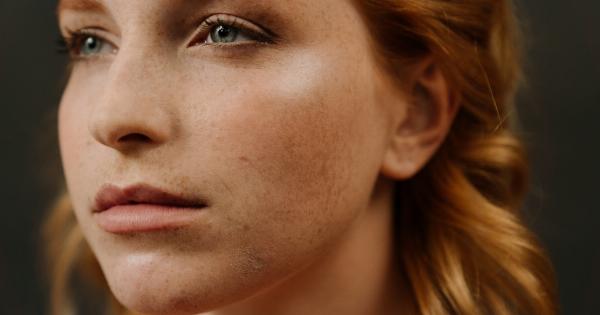Have you ever wondered what your freckles say about you? These small, pigmented spots on your skin can reveal interesting details about your genetic makeup, sun exposure, and even your personality traits.
In this article, we will explore the various types of freckles and the insights they can provide about you.
What Are Freckles?
Freckles are clusters of melanin, the pigment responsible for giving color to our hair, skin, and eyes. They are most commonly found on fair-skinned individuals, as their skin produces less melanin to protect them from harmful UV rays.
Freckles are typically a result of genetic factors, sun exposure, or a combination of both.
The Types of Freckles
Ephelides
Ephelides are the most common type of freckles. They are usually small, flat spots that are light brown or red in color. Ephelides tend to appear in areas exposed to the sun, such as the face, shoulders, and arms.
Unlike other types of freckles, ephelides typically fade during winter months when there is less sun exposure.
Lentigines
Lentigines, also known as solar lentigines or liver spots, are larger and darker freckles. They are more commonly associated with aging and long-term sun exposure.
Lentigines tend to appear on areas that receive the most sunlight, such as the hands, face, and legs. Unlike ephelides, lentigines do not fade during winter and may require medical treatment for removal.
Peutz-Jeghers Syndrome
Peutz-Jeghers Syndrome is a rare genetic condition characterized by the presence of freckles on the lips, around the mouth, and on the hands and feet.
These freckles, known as mucocutaneous melanotic macules, are flat and dark brown or blue-black in color. Individuals with Peutz-Jeghers Syndrome have an increased risk of developing certain types of cancer, particularly in the gastrointestinal tract.
Xeroderma Pigmentosum
Xeroderma Pigmentosum (XP) is a rare inherited disorder that affects the ability of the skin to repair damage caused by ultraviolet (UV) light. Individuals with XP are very sensitive to sunlight and must avoid sun exposure as much as possible.
Freckles, along with other skin abnormalities, are common in individuals with XP and usually appear at an early age.
The Genetic Component
The presence of freckles is largely influenced by genetic factors. The MC1R gene, also known as the “red hair gene,” plays a significant role in determining whether an individual will have freckles.
Variations in this gene can lead to increased production and distribution of melanin, resulting in freckles. If both parents carry the MC1R gene variants, their children are more likely to have freckles.
Interestingly, the MC1R gene is also associated with red hair, fair skin, and increased sensitivity to sunlight. Individuals with red hair and freckles often have a higher risk of sunburn and skin damage.
Personality Traits and Freckles
Believe it or not, freckles have also been linked to certain personality traits. Some studies suggest that individuals with freckles may be more outgoing, extroverted, and optimistic compared to those without freckles.
This correlation might be due to the genetic component involved. Furthermore, freckles are often associated with youthfulness and a sense of playfulness.
Celebrating Your Freckles
While some individuals may view their freckles as a flaw or imperfection, many others celebrate their unique beauty.
Freckles are often associated with a natural, sun-kissed look, and numerous skincare and makeup trends have aimed to replicate the appearance of freckles. Many famous figures, such as supermodel Gisele Bündchen and actress Emma Stone, proudly embrace their freckles, inspiring others to do the same.
Caring for Freckled Skin
Whether you love your freckles or are looking to minimize their appearance, it’s essential to protect your skin from the sun’s harmful rays. Since freckled skin is more sensitive to sun damage, follow these tips:.
1. Wear Sunscreen
Apply a broad-spectrum sunscreen with a high SPF daily, even on cloudy days. Reapply every two hours and after swimming or sweating. Look for sunscreens that provide both UVA and UVB protection.
2. Seek Shade
Limit your time in the sun, especially during peak hours when the sun’s rays are the strongest. Seek shade under umbrellas, trees, or wear protective clothing.
3. Wear Protective Clothing
Cover up with clothing, such as long sleeves, pants, and wide-brimmed hats, to shield your skin from direct sunlight.
4. Use Sunglasses
Protect your eyes and the delicate skin around them by wearing sunglasses with UV protection. This can also help prevent the development of eye freckles.
5. Stay Hydrated
Drink plenty of water to keep your skin hydrated and counteract any dryness or sun damage.
6. Visit a Dermatologist
If you have concerns about your freckles or notice any changes in size, shape, or color, it’s essential to consult a dermatologist. They can evaluate your skin and provide guidance on proper skincare and potential medical treatments.
In Conclusion
Your freckles can provide fascinating insights into your genetic makeup, sun exposure, and even your personality traits.
Whether you embrace them or seek methods to minimize their appearance, it’s crucial to prioritize sun protection and proper skincare. Remember, your freckles contribute to your unique beauty and make you who you are.





























